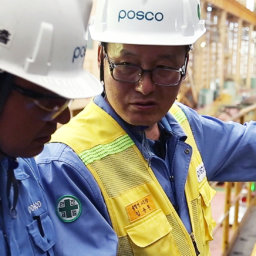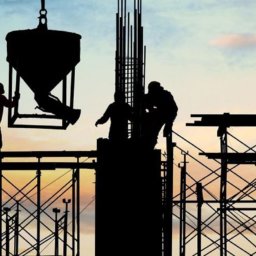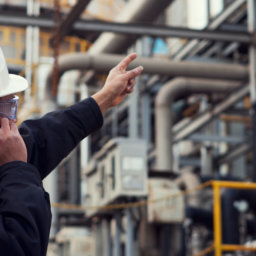It has been an incredibly tumultuous year in terms of weather and natural disasters, with many deadly storms around the world. In honor of the upcoming World Tsunami Awareness Day on November 5, here are some homes around the world that were built to withstand the effects of extreme weather with the help of steel.
Weather Events of 2017
2017 saw some of the worst natural disasters across the globe. The Atlantic hurricane season hit hard, and Hurricanes Harvey, Irma and Maria were especially devastating. Hurricane Harvey caused 82 direct deaths, and an estimated USD 180 billion worth of damage. Hurricane Irma swept across 9 U.S. states leaving 75 people dead and damage costs of USD 50 to 100 billion. Hurricane Maria is the worst natural disaster on record in Dominica with the official death toll at 51, but over 900 cremations have taken place in Puerto Rico following the storm.

The aftermath of Hurricane Harvey shows the importance of resistant housing. (Source: CNN)
In addition, typhoons, tornados and other weather events wreaked havoc on communities around the globe raising awareness for the need for better emergency and disaster relief systems and stronger shelters to withstand natural disasters.
Natural-Disaster-Resistant Homes
For people living in areas prone to natural disasters, a resistant home can make the difference between total property loss and a safe haven. Worldwide, home builders and buyers alike are prioritizing the home’s ability to withstand natural disasters, leading to innovative architectural feats.

The Tsunami House was built to withstand natural disasters. (Source: My Fancy House)
On Camano Island in Washington State, the “Tsunami House” is made to be a safe waterfront home, able to withstand stormy waters. The main living level was built five feet above ground, and the foundations are built on pilings capable of withstanding high-velocity waves. The lower home area was designed with breakaway walls. For both strength and aesthetic purposes, this house contains steel inside and out, with composite and galvanized exterior siding, aluminum windows, and milled finish steel materials indoors. A steel staircase structure ensures safe passage.

The SURVIV(AL) House is sustainable and has a safe room in case of hurricanes or tornadoes. (Source: Inhabitat)
Another example of a home built to survive natural disasters is the SURVIV(AL) hurricane proof house is a solar-powered home with a steel-encased safe room built to withstand the effects of extreme weather like hurricanes and tornadoes. Students from the University of Alabama created this home with a safe room that can withstand a two-by-four plank landing at 200 mph.

The Ophir home sits on a hillside with exposed steel frames to withstand earthquakes. (Source: Inhabitat)
The Ophir home was built in 2010 by a couple in New Zealand following a 6.3 magnitude earthquake that forced many people from their homes and community. The couple, however, built their home back up from scratch, but this time, made sure it would not collapse under any circumstances. Not only can the home withstand earthquakes, it is designed to maximize exposure to sunlight for sustainable living as well. A distinctive feature of the home is its exposed steel frames that support the concrete walls.
The Benefits of Building with Steel
Steel is one of the most popular materials for construction, but its properties make it especially valuable for natural-disaster-resistant homes. Steel has a high strength to weight ratio for durability, without the heft and its associated transport costs. It requires very little maintenance, even when used as an exterior surface, and will withstand the effects of time. It is also an eco-friendly, cost-efficient material for construction.

Steel Frames are ideal for the construction of natural disaster resistant homes. (Source: Stratco)
In fact, steel can withstand forces up to 150 mph as an exterior material, without becoming damaged. Steel is also an excellent reinforcement when used with concrete, offering the stiffness, strength and ductility needed to help a building withstand damage from events like earthquakes. As part of a building’s foundation structure, steel reinforcements help anchor the foundation, and the entire home, keeping it where it belongs through wind, waves, quakes and rain.
The damage left behind by natural disasters this year show that the effects last well beyond the initial onset. While there is no such thing as a completely weather-proof building, steel can offer a great deal of security and help minimize the destructive outcomes of Mother Nature.
Cover photo courtesy of CENHS.















